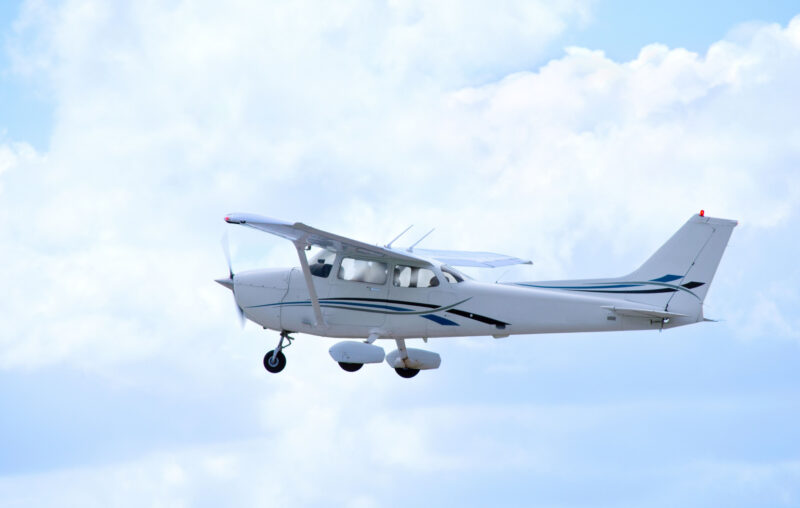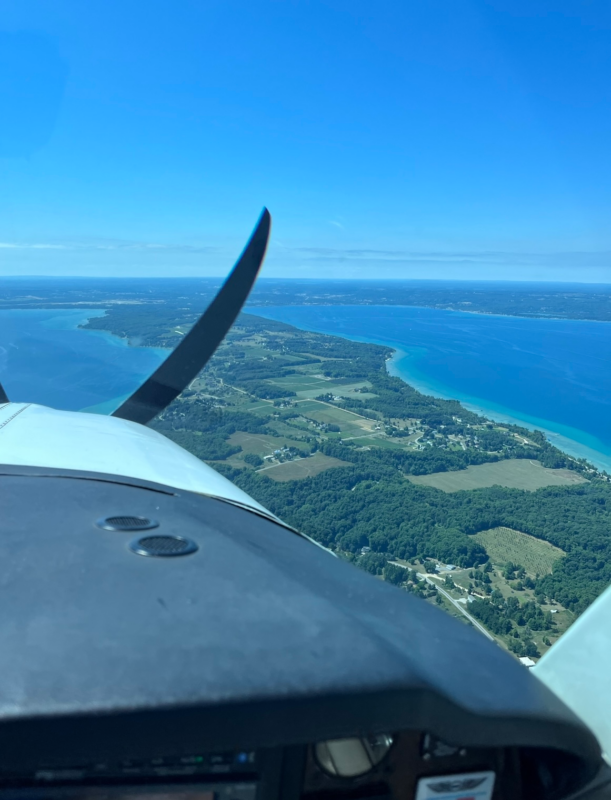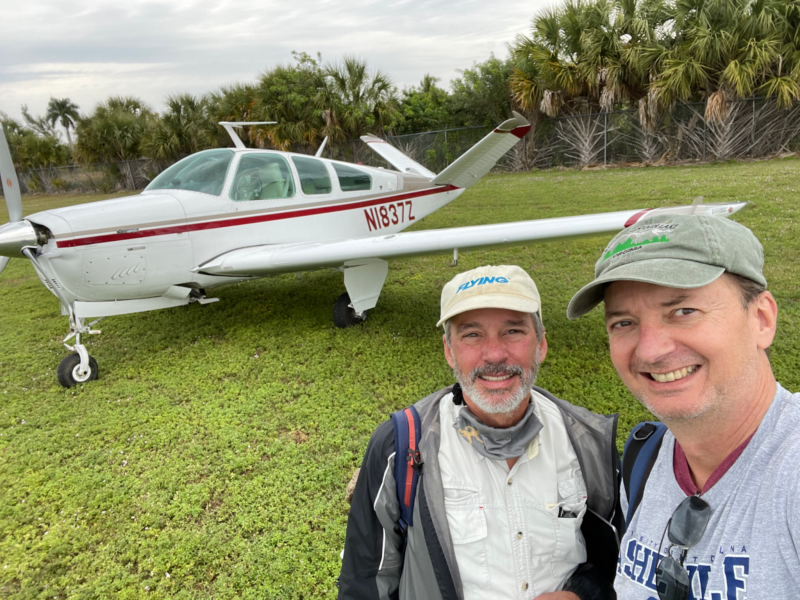When Flying Is Freedom

Last July, I stepped up on the wing of a Bonanza 4-passenger private plane and gingerly made my way into the small cockpit, with my friend and pilot Mark at the controls. With the plane full of camping gear loaded in the back, we had a weeklong trip ahead of us, flying from North Carolina to various remote spots on the western Michigan coast. I have no flight training, so this is where friendships are bonded — when one’s life is entrusted to another. Taking off from the small regional airport in Winston-Salem is always thrilling with a single engine airplane, especially as the end of the runway has a bank of tall trees that must be cleared. It makes me realize the degree to which we depend not only on the pilot, but also the maintenance staff, the engineers and the aircraft workers who hammered every last rivet on the plane. Each individual has not only a moral duty, but also a financial incentive to make sure the plane is up to the task of flying. It’s a dual feature found only in free market societies. It’s also highly reassuring when one’s life is at stake.

Flying in a private plane is more akin to sailing on the open water than it is to driving. There is an astonishing amount of freedom as one cruises at 10,000 feet at nearly 200 mph. Once we left regulated airspace, we were on our own, in terms of where and how fast we flew, and where we decided to land. If the plan is to fly during the day in clear weather using “visual flight rules,” then filing a flight plan is recommended but not mandatory. It’s similar to telling a relative that you’re about ready to take a long drive.
But here’s the surprising thing: though the United States has 520 commercial airports with air traffic control towers and a daily blitz of airline traffic to manage, there are close to 20,000 airports that have no air traffic control towers on the premises. Instead, a voluntary system of information exchanges allows these planes to take off and land each day, the vast majority of the time without incident. While speaking on the communications radios, pilots coolly use jargon, abbreviated words, and a systematic order of information to instantly establish the veracity of those in the air. On the way to Michigan, we passed through Virginia, West Virginia and Ohio, and touched base with regional air traffic controls, letting them know of our presence or desire to change altitude. Nevertheless, we had nearly full freedom to soar and explore the scenic vistas below to our hearts’ content.
After several hours of flying, we approached Empire, Michigan (population of 351), witnessing the stunning 400-foot sand dunes at Sleeping Bear National Park that rise mightily up from Lake Michigan. The public-use William B. Bolton airport had a grassy landing strip going in an east-west direction and a cement strip going north-south. It was up to Mark to weigh the safety of the two options, as he carefully watched for cross winds that could easily buffet the fully loaded 3,500-pound airplane from side to side. He chose the cement strip and we landed safely, letting us disembark near our campground just a few hundred yards away. In addition, the airport manager had left keys to a truck for us to use during our two-day stay, a common courtesy for private pilots and free of charge. Trust was operating in every corner of this experience.
Over the next week, we explored the state by air, journeying to scenic spots of Beaver Island, Traverse City, and Mackinac Island. All had unregulated airports. Mark notified the regional air traffic controls of our plans, and then radioed other pilots in the area prior to landing. This system works astonishingly well. Small plane crashes make the news because of their dramatic footage, but in 2021, just 341 people perished in general aviation incidents compared to more than 42,915 people who died in traffic accidents that year. While commercial flights are undoubtedly much safer on a per-mile basis, the odds of us having a fatal accident on this trip of around 10 hours total flight time was just 0.0083 percent, based on recent aviation statistics. And having an experienced and instrument-rated pilot such as Mark lowers the odds even further, since that means the pilot can fly confidently even if clouds or bad weather rolls in.
In many ways, the operation of these small, private planes without tight regulation is akin to participating in a thriving market. The base of a strong market is trust, which is built upon by a system of informal and formal rules that participants agree to follow. Without trust, transactions and experiences become more expensive and less rewarding, since more energy and time is spent on verification. The freedom private pilots enjoy, pointing their aircraft in any direction the birds fly, is a testament to the potential for other markets to also operate in a similar manner, without overbearing regulatory apparatuses. Certainly, most of us airline passengers are not ready to give up the comforting safety of air traffic control towers and tight regulations at busy airports like Atlanta and New York City, but experiences with private planes should have us think that in some other cases, allowing informal rules and trust among participants can work just as well or even better than centrally controlled systems.











